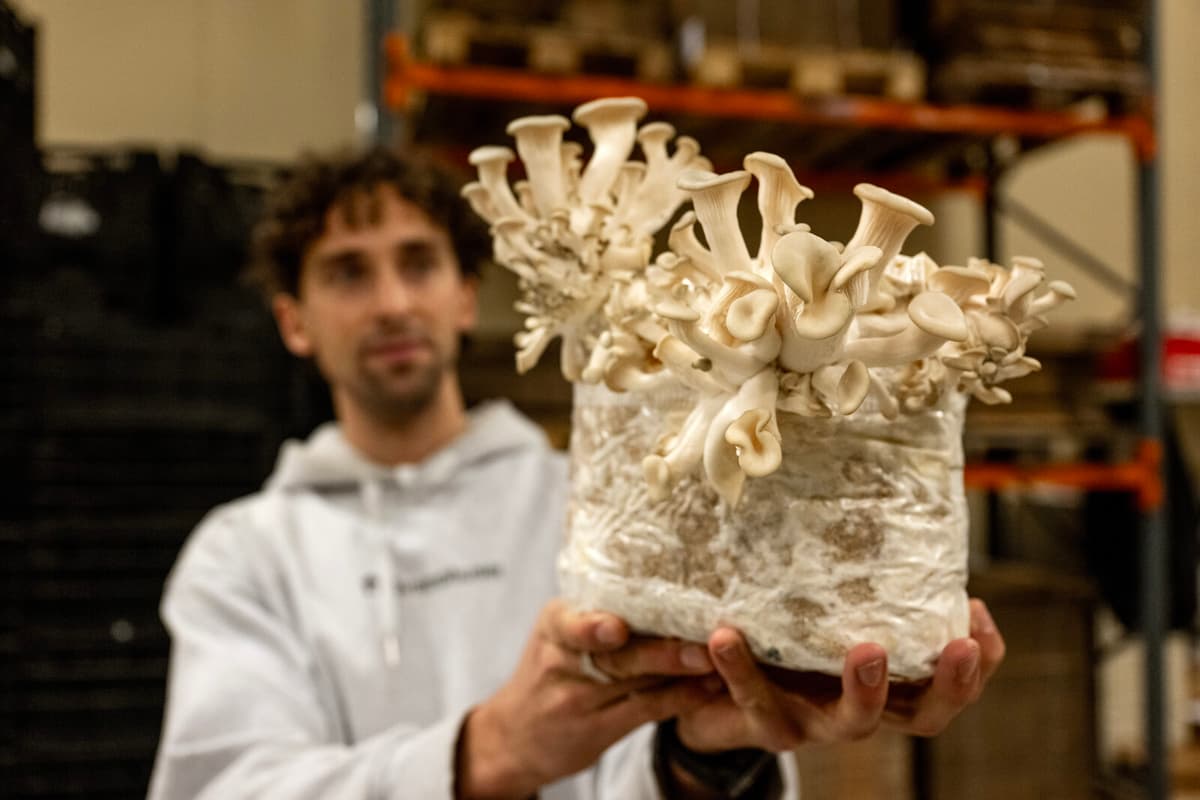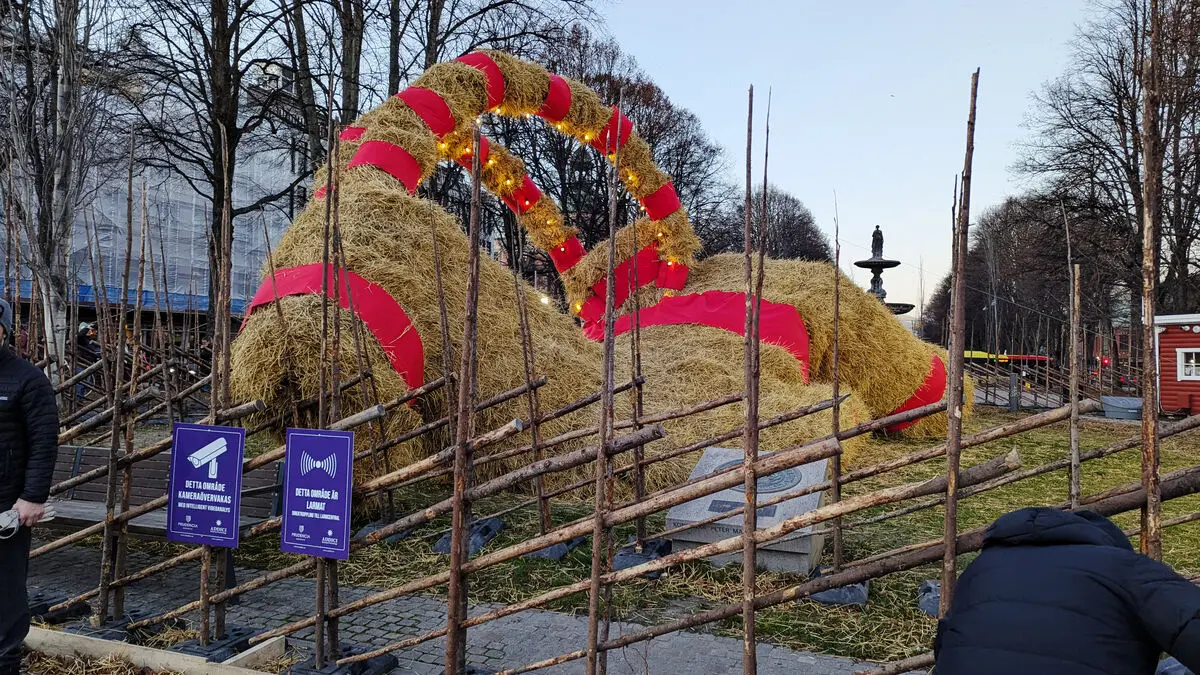To get started with mushroom cultivation, no special prior knowledge is required, says mushroom consultant Elisabeth Bååth, herself an enthusiastic home grower.
You can buy a ready-made kit. Then you get mycel, the actual mushroom, and a cultivation bag and substrate for it to grow on.
A simple beginner's mushroom is the oyster mushroom, or oyster mussel, as mycologists prefer to call it.
It's one of the most common to cultivate, it has grown the most in the whole world, actually. It's easy because it's so fast-growing and you don't need to be as meticulous with hygiene as with mushrooms that require longer time.
No chanterelles
Not all mushrooms can be cultivated, for example, some of our most beloved mushrooms like chanterelle and king bolete. They are so-called mycorrhizal mushrooms that live in symbiosis with trees. Together with the trees, they create underground networks, mycorrhiza, which require special conditions to develop, explains Elisabeth Bååth.
Experiments have been made with chanterelle in Sweden, but they didn't get any. It's quite difficult.
Button mushrooms and proud fjällskivling are compost mushrooms and can be cultivated. So do wood-inhabiting species like oyster mushroom and shiitake. In nature, they get their nutrients from decaying plant parts. When you cultivate yourself, they can grow on logs, straw, and sawdust, even toilet paper.
It doesn't become many mushrooms, but it's quite easy. You take out the roll in the middle and then pour water and put it in a plastic bag.
Asian newcomers
The easily cultivated oyster mushroom can be picked wild in Sweden, but as mushroom cultivation grows, new mushrooms have emerged on the market. They often originate from Asia. Giant oyster mushroom, enoki, and pioppini are some of the newcomers.
Many of them can be found in grocery stores, and Elisabeth Bååth recommends buying and trying them before cultivating. Her own favorite is shiitake.
I think it's so good. But it's slow-growing. It takes many years, you have to have it on logs.
Growing interest
Elisabeth Bååth has been a mushroom consultant for a long time and has also taught at Umeå University.
I've worked with courses for many years, and interest in mushrooms in Sweden has increased incredibly. Previously, it was mostly pensioners who took courses, but now it's young people. Then they come and want to cultivate too – it's super fun.
A good example is Fabian Omne. His interest in mushroom cultivation led to him taking over Svamphuset – the company that was first in Sweden to sell cultivation kits for mushrooms.
Oyster mushroom in a small mushroom house where you basically just add water goes very quickly and easily, on the other hand, cultivation with mycel plugs on logs requires a bit more time and space. But it's not difficult.
Deciduous trees best
The logs should be taken when they are damp, either in the spring or autumn, and the best species are deciduous trees like birch, alder, and beech. Fabian Omne emphasizes that you shouldn't cut down trees unnecessarily for cultivation.
If you, on the other hand, cut down trees for other reasons, or prune your trees, then log cultivation is an excellent way to utilize the leftover material. Both branches and logs work great.
Otherwise, he recommends talking to local sawmills or arborists.
The logs shouldn't have lain for too long after being felled. One to six weeks is the maximum for no other spores to take over.
The log doesn't have to be big. The smaller it is, the faster the mushroom grows, but the harvest will be smaller.
In the log, you drill holes in a diamond pattern and insert mycel plugs. They can be bought ready-made – to produce mycel yourself is a complicated process. When the plugs are in, you seal the holes with wax and also seal the ends of the log. You place or stand the log in a not-too-sunny spot in the garden – or on the balcony.
Mushrooms don't like direct sunlight, so the north side of the house or under bushes or trees usually works perfectly.
Long wait
And then you wait. Cultivation on logs is not for those who want to see quick results.
It can take a year for the first harvest. It can take two years, or three.
On the other hand, you can then look forward to several years of harvests.
Other mushrooms are well-suited for outdoor cultivation. For example, proud fjällskivling can be cultivated in a pallet cage or together with, for example, tomatoes.
It can give an incredible harvest.
Cultivating yourself is, of course, not the same as going into the forest. It may not give the same kick as searching and finding mushrooms. On the other hand, you know what you get, and that the mushrooms are edible. And, adds Fabian Omne:
You avoid cleaning.
Boel Holm/TT
Facts: Cultivation terms
TT
Mycel: The part of the mushroom that grows underground and consists of fine white threads.
Substrate: Any material where the mushroom can grow.
Cultivation block: Substrate placed in a cultivation bag where the mycel grows. A cultivation block often consists of different substrates with added grain. Common substrates used are straw pellets, oak pellets, grain such as rye and wheat, and wood chips from deciduous trees.





